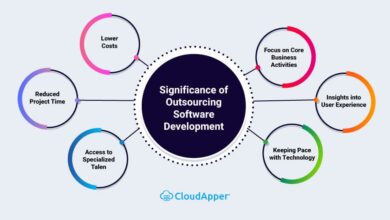How Descriptive, Predictive, and Prescriptive Analytics Transform Merchandise Strategy
A well-defined merchandising strategy can be a differentiating factor for businesses looking to stay competitive. Due to variations in market demand, changes in customer needs, and organizational problems in handling inventories, sound decisions in planning, procurement, and control of inventories are important.
Merchandise analytics has evolved to the extent of not making decisions based on historical records but rather, making decisions based on current trends and future trends. While past data is useful, it is not sufficient to effectively deal with constantly shifting market conditions.
This is where data-driven approaches come in to optimize merchandise planning. Companies know the role of analytics in transforming their merchandise strategies from reactive to proactive, and thus its global market is expected to grow from $8.5 billion in 2024 to $25 billion by 2029.
Role of Analytics in Merchandise Planning
Analytics allows a business to have a complete outlook on its stock, customers, and the market. In this way, they can make better, faster decisions that can increase sales, manage stocks, and increase their organizational performance.
The three key types of analytics that play a crucial role in transforming merchandise strategy are:
- Descriptive
- Predictive
- Prescriptive
1. Analyzing Historical Performance with Descriptive Analytics
The descriptive analysis lays the base for merchandise analytics. It focuses on providing insights into past sales, customer behavior, and inventory performance to help businesses identify patterns and trends. It helps in finding,
- Sales Trends: Identifying seasonal fluctuations, peak sales periods, and product popularity.
- Customer Segmentation: The importance of knowing customer segments and their needs.
- Inventory Performance: Counting stocks, detecting cases of stock-outs, and evaluating stock-turn.
Some of the basic data that can be obtained from the key metric of sales volume, product turnover, etc. include information on the most sold products, products that remained unsold for a long period, and fluctuations that occur seasonally. These data are useful for defining customers’ preferences and using this knowledge to adjust merchandise planning.
For example, a retailer sees that some commodities are specific to the holiday season while others are slow movers for most of the year. He can use descriptive analytics to optimize the stock levels and promotions and avoid having too much inventory during certain times of the year while having too little during others.
2. Forecasting the Future with Predictive Analytics
Whereas descriptive analytics is all about history, predictive analytics gives data on the future. Based on historical data it employs sophisticated algorithms and machine learning techniques to determine future trends. It assists in predicting customer preferences, and demand and in managing the inventory to avert some of the costly problems. Predictive analysis enables effective merchandise planning through,
- Forecasting Demand: Predict future sales volumes and inventory needs.
- Anticipating Customer Preferences: Recognise new trends and adapt the product range accordingly.
- Optimizing Stock Levels: Minimize stock out or overstock conditions by estimating demand and stocks accordingly.
From past buying patterns, current trends, and external factors like changes in the economy or the weather, one can be able to predict which products are likely to be in high demand and make changes in prices for slow-moving products. This will enable you to make the necessary changes to have the right stock.
Let’s say, a retailer finds out that the sales of winter coats will increase in the coming seasons through the use of big data. With this demand forecasted, he can make sure that there are enough stocks to meet the customers and that no opportunity for sales is lost.
3. Making Informed Decisions with Prescriptive Analytics
Prescriptive analytics can take the burden of making proper decisions out of you. This is an even higher level of analytics not only to predict future results but to also suggest the right course of action given the prediction. It improves merchandise analytics and assists decision-makers in the form of valuable information such as:
- Assortment planning: Decision on the type of products to stock or what range of products to produce.
- Pricing strategies: Offering the right prices that will ensure that the firm receives the maximum returns.
- Product placement: Identifying the best locations for products within stores.
Prescriptive analytics takes into account attributes like customers’ preference, price sensitivity, and supplier limitations, to identify the best course of action. They can help in how to change the price of the product to different consumers or where to place a certain product in the supermarket to increase its sales.
Suppose a retailer is constrained with space, particularly when introducing a new product into the market. Prescriptive analytics can then use the data to determine what product, price, and location on the shelf will produce the most sales based on customers’ behavior and available stock.
Bottom Line
Merchandise analytics is all about the decision-making with the help of the data and this is crucial to remain relevant. According to the approach that included descriptive, predictive, and prescriptive analytics, the advantages of merchandise planning can be fully utilized. These analytics methods can help you in the choice of the right strategies for managing inventories, fulfilling customers’ needs, and maximizing your profitability.
As businesses continue to adopt advanced analytics, several emerging trends will further shape the future of merchandise planning, beyond just artificial intelligence. Edge computing, cloud-based analytics, and augmented analytics are some of them. These trends leverage real-time data, do not require data scientists, and improve the speed and accuracy of decision-making.
Embracing the current analytics methods and emerging technologies will not only enhance your merchandise strategies but also future-proof your business.




